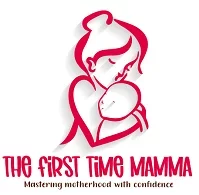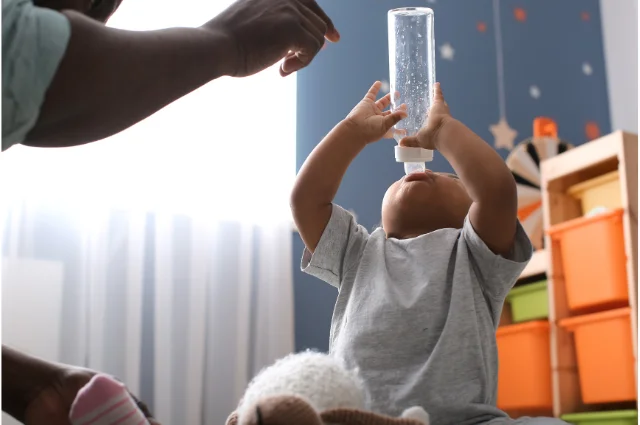The American Academy of Pediatrics suggests that your child shouldn’t bottle feed beyond eighteen months of age. It is safe to say that bottle feeding shouldn’t last more than your baby’s 2nd year birthday. It also means that having a 3 year old still on bottle is unacceptable.
Hey! By the way… any links on this page that lead to products on Amazon are affiliate links and I earn a commission if you make a purchase. Thanks in advance – I really appreciate it! .
Encouraging your 3 year old still on the bottle to switch from bottle to cup feeding may be challenging. In this blog post, however, we will enlighten you on the effects of having your child bottle-fed for longer than usual and expose easy ways to help your baby ditch the bottle and embrace the cup. So keep reading!
Effects of bottle feeding for too long
There are several effects of having a 3-year-old still on bottle as seen below:
- It can increase the risk of your child choking.
- It can increase the risk of your child over-eating.
- Bottle feeding for too long can also cause ear infections.
- It can alter your child’s sleep cycle as they’ll be more concerned with eating than having adequate rest.
- Allowing your child to bottle feed longer than necessary can lead to dental cavities.
- Prolonged bottle feeding can cause early tooth decay for your child.
- It can affect the facial development of your child’s face, especially along the mouth area.
- Prolonged bottle feeding, especially at night, can cause respiratory diseases like wheezing, asthma, and otitis media.
How to stop bottle feeding a 3-year-old?
1. Gradual transitioning
Do not be too rigid while trying to stop your 3-year-old from using the bottle. Instead, make the transition a gradual process. If your baby is used to having four bottles of milk daily, you can begin by reducing it to three bottles daily for a week, while encouraging them to eat with the rest of the family on the table.
Serve them a cup of milk in place of the bottle and encourage them with words like, “you should start eating like mom and dad since you have grown so big now.” Tell them they can have their milk bottle later after the one in a cup. That’s why you should only cut the bottles out one at a time. Drop a bottle each week until your child gets used to eating all meals from the cup or plate.
2. Make use of Sippy cups
Make your child drink from Sippy cups with straws whenever they cry for the bottle. Use sippy cups designed for children, and avoid those with soft straws. You should use the ones with stronger straws as dentists recommend them. Check out one of the best sippy cups for babies on Amazon.
3. Gradually eliminate milk in a bottle
As part of the gradual transition from bottle to cup feeding, you can eliminate milk from your child’s bottle over time. When your child asks for milk, replace a portion with water. At other times offer your baby whole milk in a cup.
Keep increasing the water portion until you start giving them a bottle filled with water when they ask for milk in the bottle! With time, bottled milk becomes less desirable to your child, and they begin to ask for milk in a cup!
4. Shower your child with praises
Cultivate the habit of showering your child with praise whenever they use the cup. Say lots of nice things and make them feel proud of themselves. You can also add some rewards like candy or their favorite pie.
Doing this will encourage them to let go of the bottle quickly, as they’ll want to show you how grown up they’re becoming! Also, get them special cups with their name written in beautiful characters such as this Personalized Insulated Stainless Steel Sippy Cup. You can ensure the cups have images of their favorite cartoon characters such as The First Years Minnie Mouse Straw Cup available on Amazon. Let your 3-year-old know that because they’re so unique, no one else can feed out of the cups except them alone!
5. Keep the bottle out of sight
As you progress in the transitioning process, there comes a time when you will have to keep the bottle out of sight for good. Let your child know they’re grown past using it. Get them a spot at the dining table and let them eat with the rest of the family at each meal. Before taking this final step, however, you should have made good progress in having your 3-year-old still on bottle eat from the cup for some time.
Conclusion
You wouldn’t want to have a 3-year-old still on the bottle when they should be feeding from a cup. You wouldn’t be happy to see your pumpkin suffer the unpleasant effects of bottle feeding for too long. As you put the tips discussed in this blog post into practice, your baby will start eating from the cup without many hassles.

